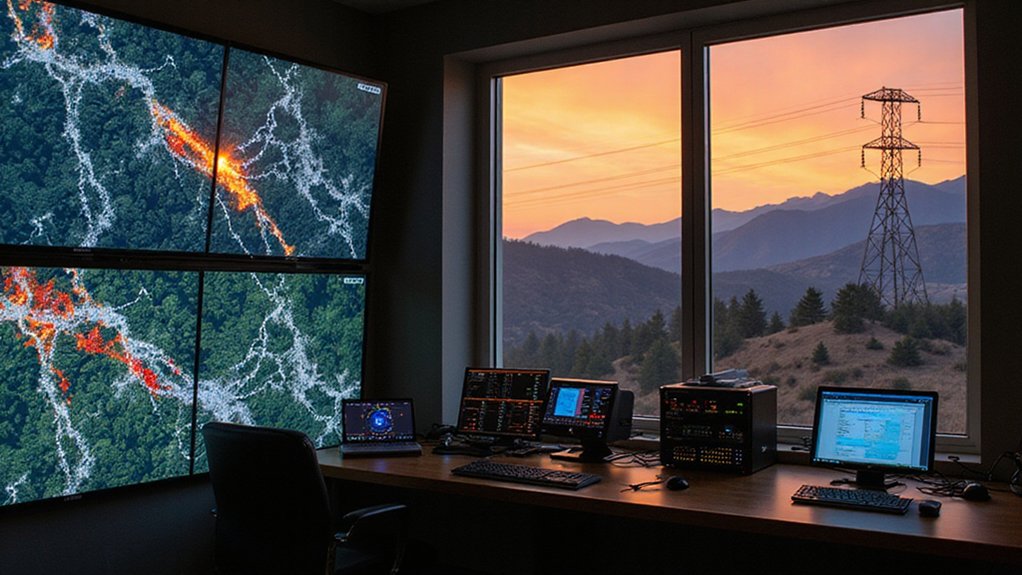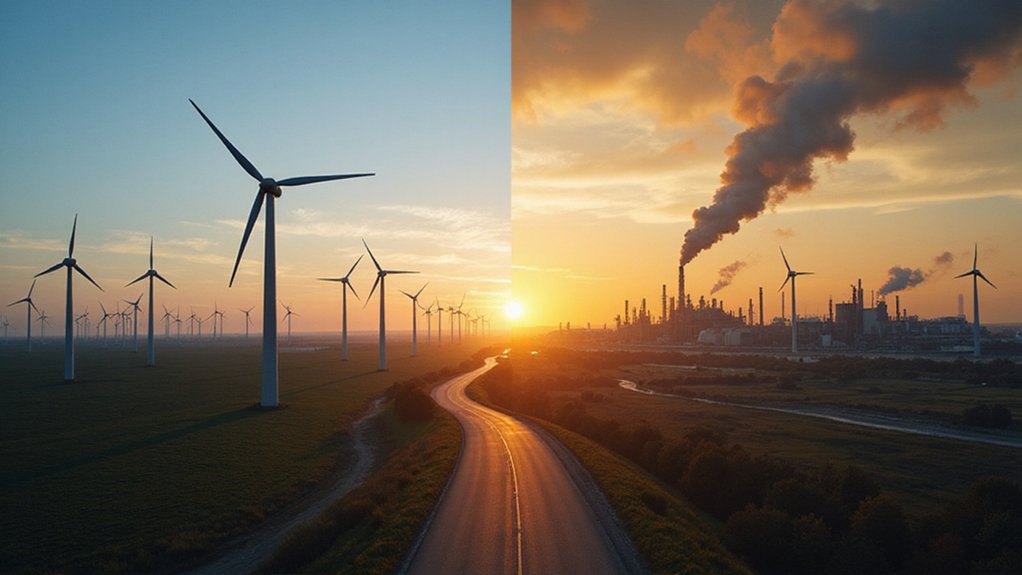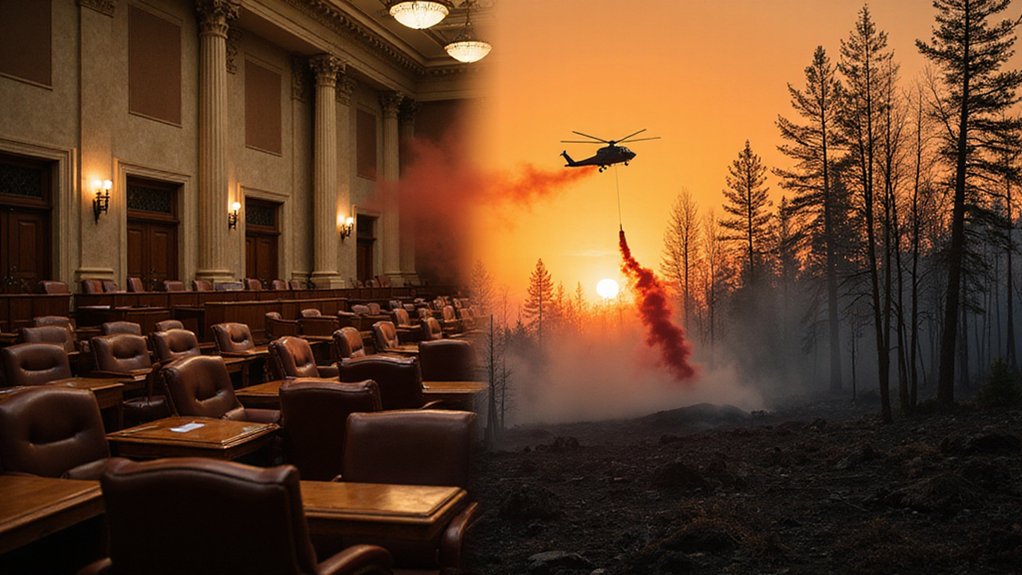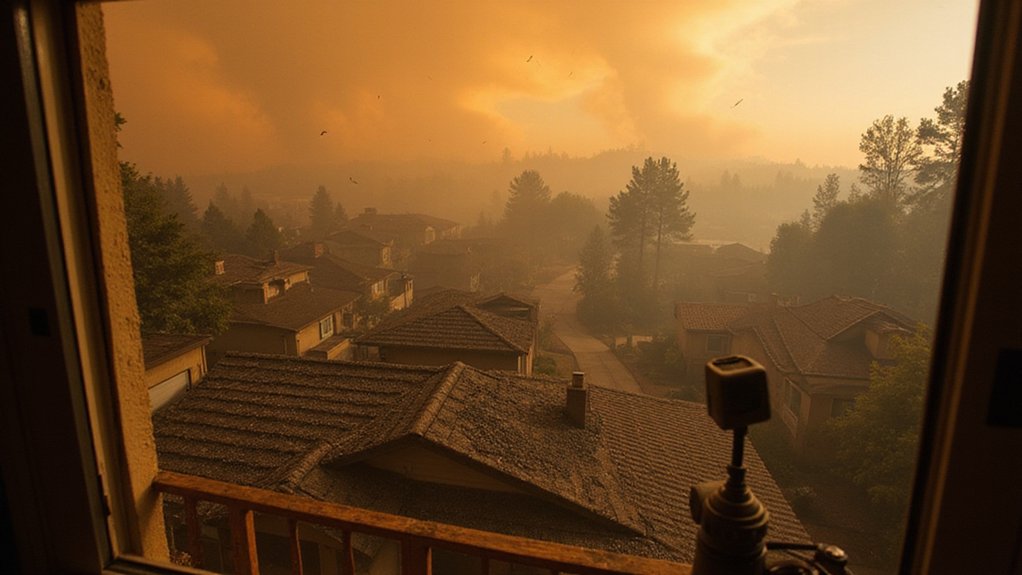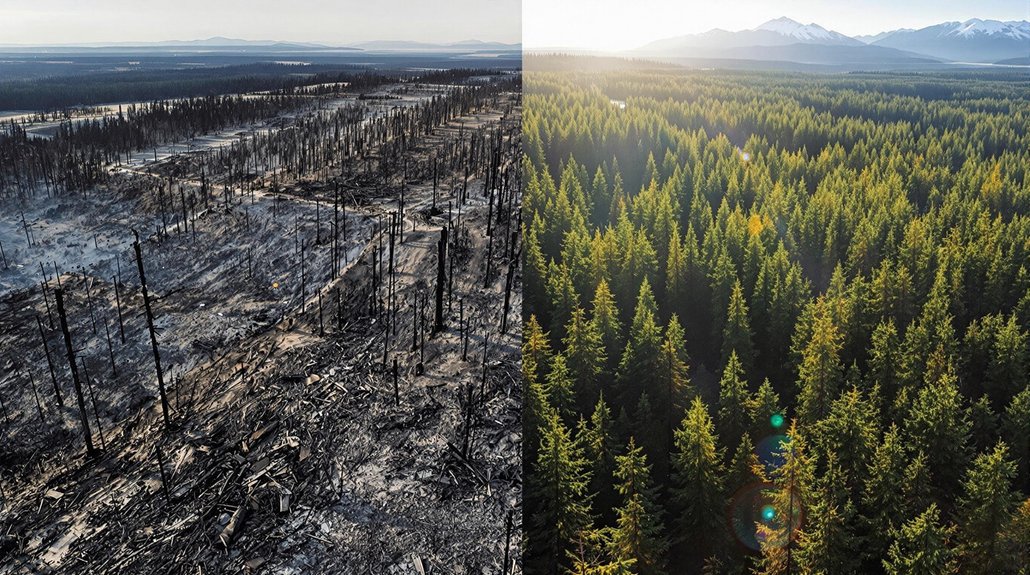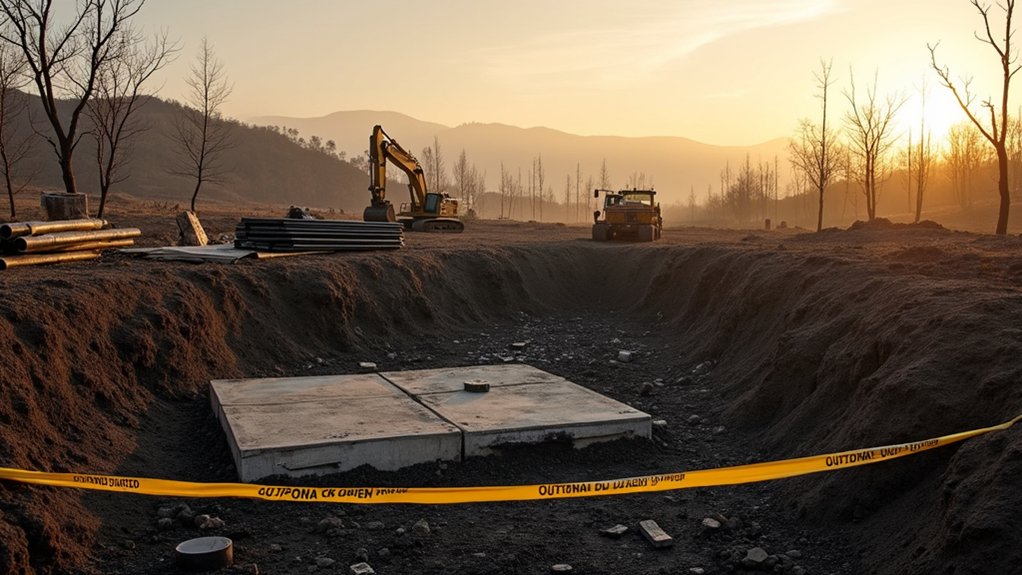Utility companies are going high-tech against wildfires. AI systems now spot fires as small as 5m x 5m, slashing response times by up to 30 minutes. These digital watchdogs never sleep, monitoring powerlines and predicting trouble spots before disaster strikes. California’s AI system recently contained a blaze to under a quarter acre—pretty impressive for some fancy math. The tech can predict up to 76% of wildfires before they even start. Talk about fighting fire with algorithms.
As wildfires rage with increasing frequency and ferocity across the globe, artificial intelligence has emerged as humanity’s unexpected digital firefighter. Turns out computers are better at spotting disaster than we are—go figure. These AI systems can now detect fires as small as 5 meters by 5 meters, while we humans are busy scrolling through social media.
California has already seen the benefits. Their AI-powered detection system helped contain a fire in Black Star Canyon to less than a quarter acre. Quick response, minimal damage. The machines are learning, too. Wildfire sensors and AI cloud systems constantly improve by digesting environmental data like a digital pyro-meteorologist on steroids. Much like geothermal energy’s environmental benefits, these AI-powered solutions are helping reduce the carbon footprint associated with catastrophic wildfire events.
But detection is just the appetizer. The main course? Prediction. Generative AI models combined with satellite data are forecasting wildfire movement with remarkable precision. They’re tracking paths, intensity, and growth rates while factoring in topography, weather, and historical data. USC researchers recently developed an innovative model using satellite imagery and AI to dramatically improve wildfire management and emergency response. The Finnish-developed FireCNN model is particularly impressive. Real-world testing with historic California wildfire data shows these systems actually work. No empty promises here.
Prevention gets a high-tech makeover too. AI-trained models can predict up to 76% of wildfires before ignition. That’s better odds than most weather forecasts. These systems guide utilities on where to trim trees near powerlines and when to shut down grid operations during extreme conditions. Early detection systems like ALERTCalifornia have reduced response times by 20-30 minutes compared to traditional methods. Smart prevention beats dramatic reaction every time.
For utility companies, this technology is a game-changer. They’re deploying AI for grid monitoring, maintenance scheduling, and targeted vegetation management. The systems flag equipment at risk of failure before it can spark a disaster. It’s like having thousands of digital inspectors working 24/7 without lunch breaks or vacation days.
Resource allocation benefits massively from this digital transformation. AI models prioritize assets where fire risk is highest, guiding aerial and ground crews to the right places. Faster, data-driven responses. Better containment. Fewer tragedies. Sometimes technology actually delivers on its promises.
References
- https://www.dhs.gov/group/13025/technology-reduce-impacts-wildfires
- https://today.usc.edu/using-ai-to-predict-wildfires/
- https://www.asce.org/publications-and-news/civil-engineering-source/article/2024/11/14/artificial-intelligence-detects-fires-early-protecting-people-infrastructure
- https://www.aiwire.net/2025/01/14/tech-vs-nature-the-complex-role-of-ai-in-wildfire-control/
- https://www.weforum.org/stories/2023/09/ai-model-prevent-wildfires/
